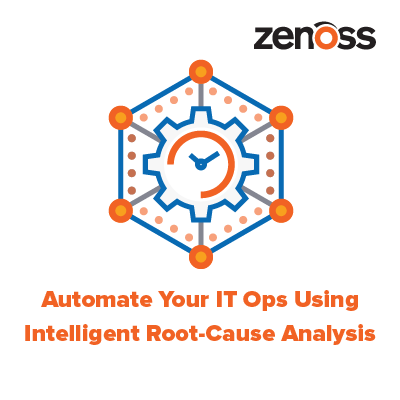
“Pinpointing the primary cause of an issue within a complex application technology stack can be frustrating and time-consuming. An intelligent monitoring solution that uses AI/ML can shorten response and remediation times by providing more accurate, prescriptive, and predictive guidance.”
What is Intelligent RCA and Remediation?
Modern enterprises have different approaches and tools to identify and solve IT issues using advanced data collection and analytics. One of the key challenges is the lack of complete visibility and inability to detect the root cause of a problem quickly, which leads to disruption of service and a poor end-user experience (an outcome which has increasingly become a top priority for IT teams to avoid).
Intelligent RCA and remediation provide IT teams with readily accessible contextual data collected from different sources, which helps with faster mean time to resolution. AI/ML-enabled RCA facilitates your troubleshooting process by uncovering current interdependencies between different components in your hybrid IT infrastructure. Also, it helps in automating incident resolution based on issues identified, which dramatically improves user experience.
Forrester acknowledges that monitoring solutions with intelligent RCA and remediation capabilities provide greater value to users, since IT engineers will simply not be able to make sense of all the data and variables from their highly complex and dynamic IT environments. IT Ops teams need software to help them throughout their deductive problem-solving process — accelerating resolution by streamlining investigation and collaborating across teams, quickly identifying root cause, and automating remediation. Instead of spending their time treating recurring symptoms, they should attack problems at their core.
How Should We Automate RCA and Remediation?
Adopting a model-based approach that incorporates all kinds of data from different sources and storing them in the same place enables IT Ops to quickly execute RCA to identify the services impacted by a component failure. A topology model includes discovered and logical relationships, supporting both RCA and impact analysis. You can easily browse all other data coming in at that time from across your hybrid IT environment to quickly scope out the level of impact a particular incident is generating on your applications. RCA is provided by event analysis from service elements and dependencies, informed by a set of policies. With machine learning capabilities, you can quickly highlight relevant data or group data points together to eliminate event storms.
By adopting software-defined IT operations, IT practitioners from multiple disciplines can all work from a single source of truth to properly identify next steps and assign teams to execute remediation when an issue occurs. This can lead to cases where remediation steps can be automated, without IT intervention, further reducing time to resolution. Software-defined IT operations offers a platform to automate key ITOM functions that increase efficiency and eliminate human error.
Modernize Your Monitoring Approach
The key to modern monitoring is selecting a platform with an ability to perform event correlation based on a native, deep understanding of the IT infrastructure components and dependencies. One that is domain-aware as well as IT service-aware — one that knows how the infrastructure works in order to determine logical relationships. Understanding how these individual monitored elements support a critical service at any given point in time helps to prioritize the most important issues to investigate and resolve first.
A software-defined IT operations management platform like Zenoss Cloud helps IT Ops teams understand IT service risks in real time, and reduce noise by bubbling up service-impacting events (with prioritized RCA and impact analysis to ease resolution). Zenoss is uniquely able to build a topology model spanning across the entire spectrum of technology assets — enabling IT team members across disciplines to easily collaborate and work from the same set of data. Not just the top of stack, not just from systems instrumented to send metrics, but for every element in the technology stack. Machine learning algorithms automatically highlight anomalies in the incoming data. ZenPacks provide the ability for customers to add support for custom device monitoring and extend the functionality of the Zenoss platform. ZenPacks support users developing direct remediation with user-developed scripts and deliver service desk integration to create and resolve tickets automatically.
For more information on how you can utilize Zenoss Cloud to unify your observability practices across legacy and modern IT environments, contact Zenoss to set up a demo.
To learn more about the emerging solution category Intelligent Application and Service Monitoring, download the report here.






